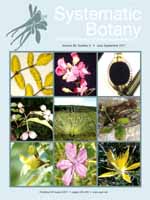The complexity of ovulate cones and their preservation as fossils makes them promising material for reconstructing the evolutionary history of gymnosperms, but phylogenetic analyses of cone morphological characters of Pinaceae have been inconclusive. We describe the ovulate cone anatomy of Pinus nelsonii, a rare and phylogenetically isolated pinyon pine endemic to Mexico, and add the species together with Pinus ponderosa and the fossil Pinus belgica to a recoded and expanded ovulate cone morphology matrix for fossil and extant Pinaceae. The cone anatomy of Pinus nelsonii conforms to previous generic concepts of Pinus. Despite its phylogenetically isolated position among the soft pines (Pinus subgenus Strobus) and thus potential for displaying plesiomorphic features, the cone of Pinus nelsonii is unlike the oldest Pinus fossil cones in possessing enlarged, functionally wingless seeds partially embedded in scale tissue, and in lacking sclerenchyma in the cortex of the axis, in the bract, and in the scale. Cladistic analysis of cone morphology characters recovers several Pityostrobus species in a clade with Pinus. Although the inferred relationships among living species do not coincide in several respects to molecular studies, adding taxa and further exploration of characters promise to clarify relationships.
How to translate text using browser tools
1 July 2011
Pinus nelsonii and a Cladistic Analysis of Pinaceae Ovulate Cone Characters
David S. Gernandt,
Calixto León-Gómez,
Sergio Hernández-León,
Mark E. Olson

Systematic Botany
Vol. 36 • No. 3
July 2011
Vol. 36 • No. 3
July 2011
fossils
Obirastrobus
phylogeny
Pityostrobus
Pseudoaraucaria




